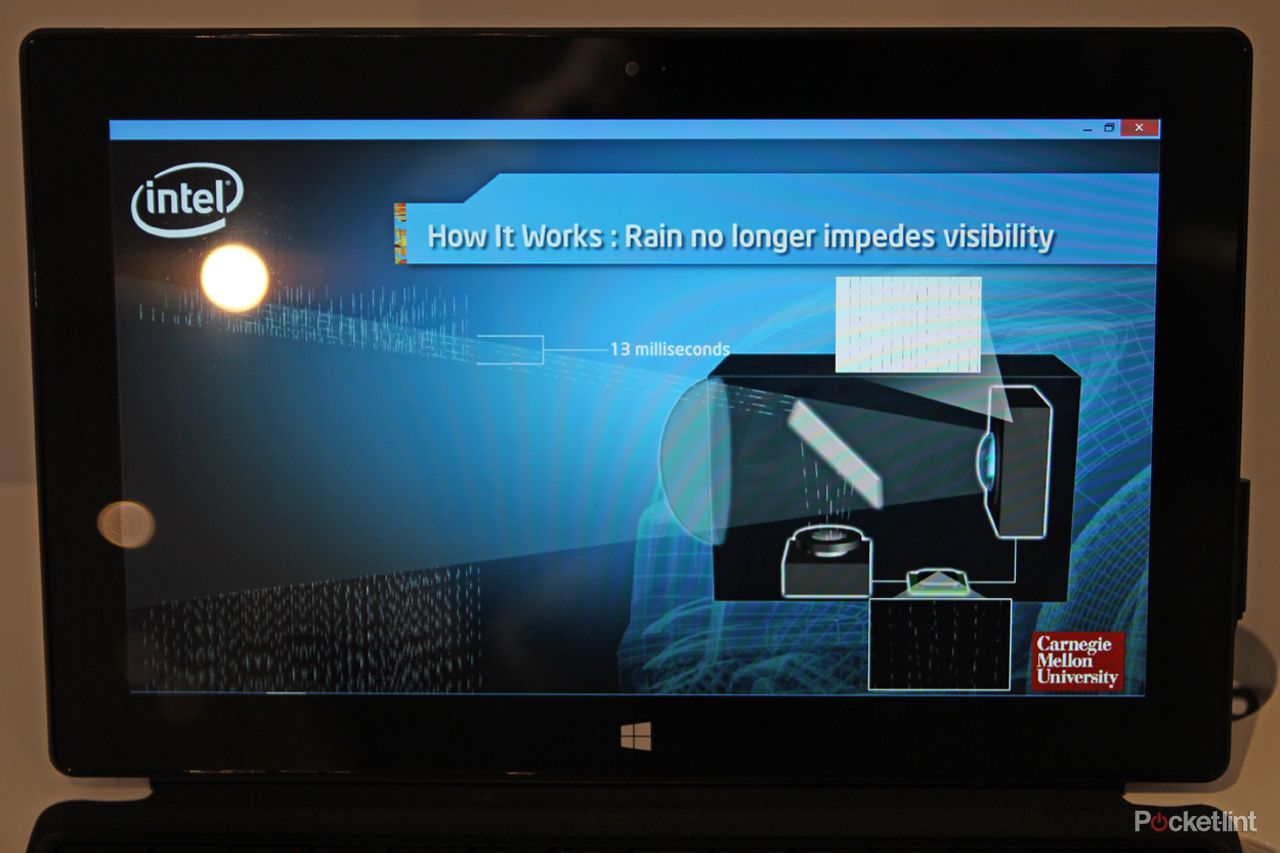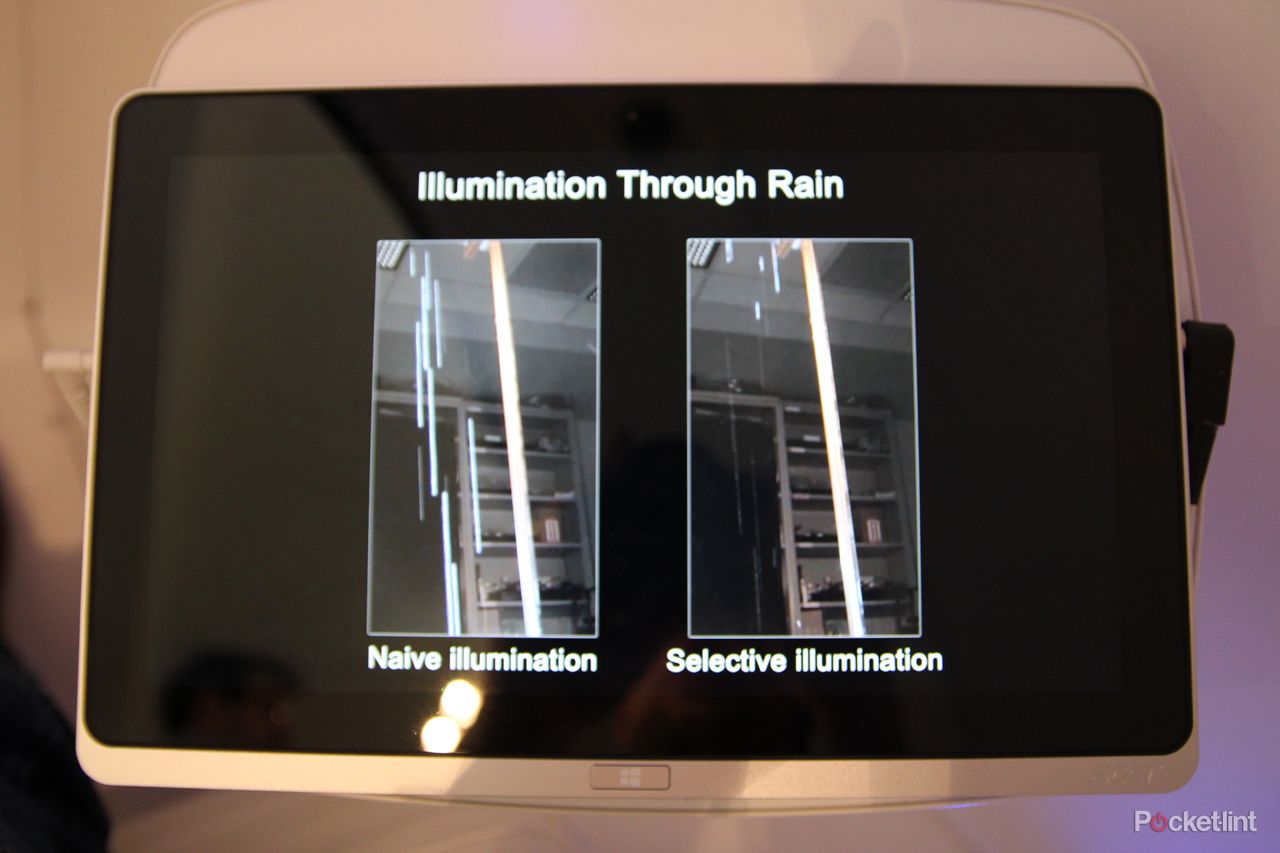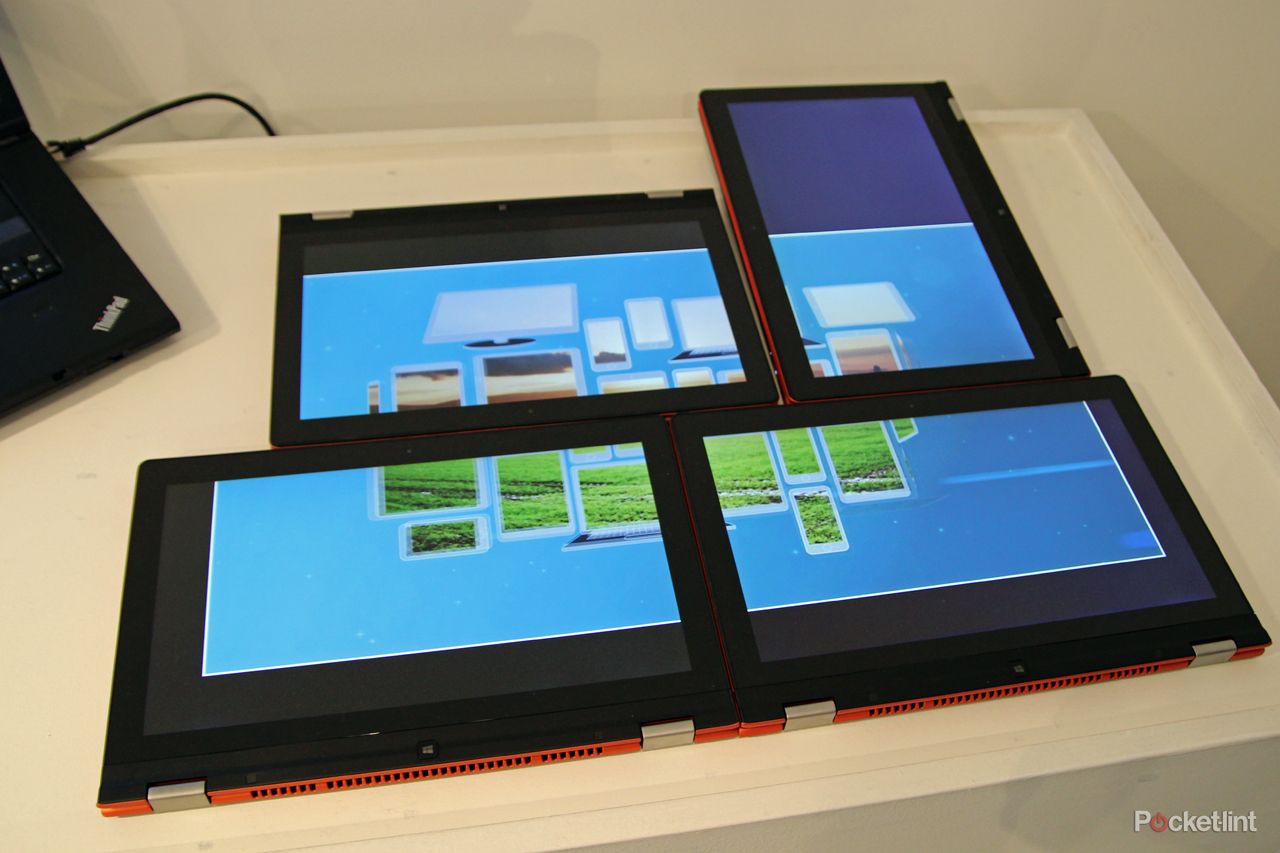Intel has shown off some of the plans it has for the future, demonstrated along with various partners today in London, UK. While there are plenty of the computer-based developments you'd expect, it was some of the more practical applications that caught our eye.
Adaptive headlights have been in development from various angles for some years. We recently saw Audi's take on advanced headlights, that will reduce glare without impeding visibility, but Intel has another trick up its sleeve.
In a research project working with Carnegie Mellon University in Pennsylvania, Intel has developed a smart headlight designed to see through rain. The idea is that the light source can cut out the reflection from the falling rain and avoid those bright streaks that you'll see when driving in a storm.
It works by detecting that reflection and processing the information to adapt the transmitted light to match the path of the falling raindrops. In essence, it cuts the transmitted light so that the reflection doesn't happen.
Rather than using a traditional single-bulb source, the smart headlight relies on a light source more like a projector, allowing it to selectively transmit as needed. Intel assures us that this won't lead to flickering, but the tech is still some way off: Intel is saying it might be in cars within 10 years.
A technology that's closer to being made a reality is Intel's 360 Wireless Display. This tech will give you control over a 360 video, using the motion sensors in your smartphone. That sounds pretty normal, but in this instance, using wireless display you can send that signal to a TV or projector and then control the direction the camera in the 360 video looks using your smartphone.
It might sound niche, but the fun applications of this are fairly obvious. You'll be able to explore a 3D environment really easily and look at what you want, rather than what the "director" intended. That might be exploring a city or, as we did, getting a different view on the ski slopes.
What's most remarkable about this technology is that there's no lag between the movement of the device and the action on the display: it's slick and seamless. It's also going to appear in the "near future" according to our man in Intel.
Display as a service is another interesting application that uses wireless display technology. This will appeal to retail space, where multiple displays are used for big installations, but can also have applications at home or work.
The system will let you use any networked displays to form a larger interactive display. You can reorient the component displays and they'll still behave as one collaborative display device, giving you a much larger space to in which to work or play.
You can have multiple windows displayed and Intel's aim, working with the German Research Centre for Artificial Intelligence and Saarland University, is to have an open standard in the next 5 to 10 years which will mean you can use any set of networked displays, with any applications, with no fuss.
Those clever displays might find their way into shops and shopping malls, but more and more, people are shopping online. That's very convenient, but more often than not, that outfit that looks great on a model just doesn't look right on you. Enter the Intel virtual dressing room.
The idea is to have a 3D camera system such as Microsoft Kinect create an avatar, or representation, of yourself, to then try on clothes virtually. It isn't as exciting as getting yourself a private fitting room in an exclusive boutique, but you can just snap through different outfits and see what looks right on you. We don't know if it will cater for different sizes, or if you'll have to stand there naked, but it's still an interesting idea.
Talking to an Intel spokesperson today, we were told that the aim would be to provide retailers with the information they need, so that the "magic mirror" knows how the clothes will fit to different body types.
It's early days for this research, however, so it looks like you'll still have to be hitting Westfield for that shopping fix for the time being.



